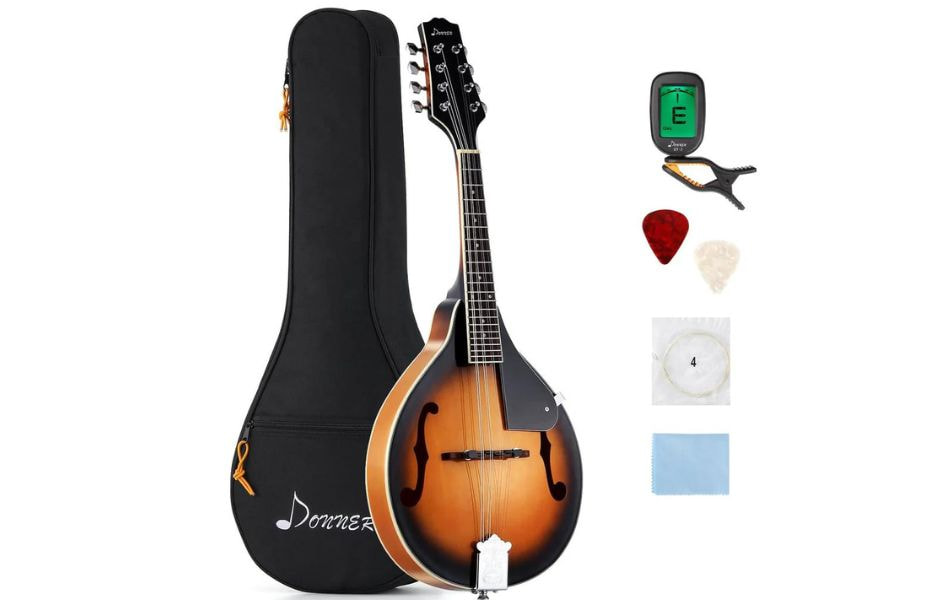Embarking on your journey with the mandolin is an exciting endeavor. Mastering the mandolin standard tuning is a fundamental step in this musical odyssey. The precise tuning of a mandolin sets the stage for the beautiful melodies you’re about to create.
Contents
Getting acquainted with the mandolin
Before understanding mandolin standard tuning, you must have proficient knowledge of the mandolin. Adjusting the mandolin’s strings is crucial for anyone picking it up, whether it’s a brand-new mandolin or a vintage one. The mandolin has a lovely sound and uses a unique tuning system with eight strings and eight tuning heads, making it intriguing for beginners and experienced players.
When you look at it, the mandolin might seem a bit complicated compared to a guitar. It has eight strings, grouped in pairs, running along the neck. Interestingly, each pair of strings produces the same note. If you play the strings from low to high, you get this musical sequence: GG, DD, AA, EE. If you know the violin, you’ll recognize this pattern.
Before you start tuning, make sure all eight strings are properly attached to their tuners at both ends of the mandolin. Using a clip-on tuner or a tuner app on your smartphone can make the tuning process more accessible and more accurate. Whether you’re a beginner or a seasoned player, tuning the mandolin is a crucial step to make beautiful music.
Mandolin standard tuning
Mandolin tuner app: Guitar Tunio
Using a mobile application designed for mandolin tuning is the most convenient, rapid, and straightforward method. If you’re on the lookout for a trustworthy tuning app, Guitar Tunio is the ideal choice. This application offers an intelligent mandolin tuner, simplifying the tuning process with precision.
The tuner within this app offers both Manual and Auto modes. In Manual mode, you can opt for the string you wish to tune, and the app will produce the precise sound of that string for accurate tuning. On the other hand, Auto mode makes tuning even simpler – just play any mandolin string, and the app will automatically identify the string and guide you to tune it accurately.
It’s incredibly straightforward! Don’t hesitate: Download Guitar Tunio Pro now to ensure your instrument is perfectly tuned. Available on both the App Store and Google Play, so don’t miss out!

Electronic tuner
Tuning your mandolin with an electronic tuner is a breeze. Begin with the G string, plucking it and adjusting the tuning peg until the tuner signals the correct G note. Move on to the D string, repeating the process to achieve the accurate D note. Next is the A string—pluck, adjust, and align it to A. Finally, fine-tune the thinnest E string to complete the standard GDAE tuning. The electronic tuner’s clear display ensures precise tuning for each string.
Achieving the standard GDAE tuning for your mandolin using an electronic tuner is efficient and reliable. Start by setting up your tuner in chromatic mode. Pluck each string in sequence, from the thickest G string to the thinnest E string, adjusting the tuning pegs accordingly as the tuner guides you to the correct pitch for each note. This modern tool takes the guesswork out of tuning and ensures your mandolin is perfectly in tune for a wonderful musical experience.

How to gain mandolin standard tuning by ear
To tune a mandolin in this style, you can use the sounds from other strings to compare and adjust the sound for the string that needs tuning. For example, you can compare the sound of the 5th string with the 4th string to make sure we sound the same note or the same number of frequencies. Proceed similarly with the remaining pairs of strings until the most quickly and reasonably balanced tone is achieved.
Once you’ve accurately tuned the E string, you can use it as a reference to establish the pitch for the remaining strings. After tuning the E string, play the string above it (A) at the 7th fret – it should produce an identical sound. If not, make adjustments to the A string until it is in tune. Repeat this process across the mandolin.
Regardless of whether you’re seeking to tune a soprano mandolin or other sizes and variations, the standard tuning remains G3-D4-A4-A5, mirroring the tuning used for violins.
In conclusion, now armed with the knowledge and techniques shared in this guide, you can confidently tune your mandoli. So, let the chords ring true and the music flow smoothly – for in tuning your mandolin, you have tuned your path to musical excellence.
